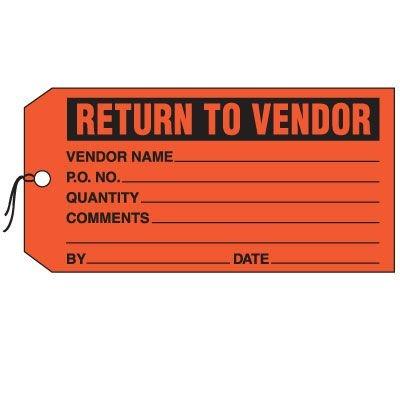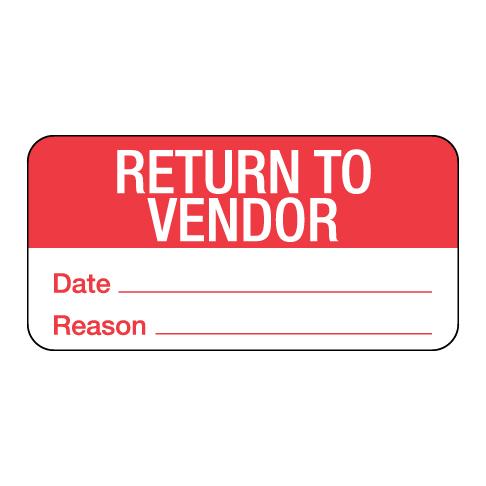In the intricate world of supply chain management, the process of Return to Vendor (RTV) plays a crucial role in ensuring the smooth flow of goods from production to the end consumer. From managing transport logistics to navigating the complexities of shipping, RTV logistics requires careful coordination and precise execution. In this article, we delve into the intricate web of RTV logistics, exploring the challenges and solutions that businesses face in the realm of reverse supply chain management. So buckle up as we embark on a journey through the world of RTV logistics.
Key Considerations in Implementing Return to Vendor (RTV) Logistics
One key consideration in implementing Return to Vendor (RTV) logistics is to establish clear communication channels between all parties involved in the process. This includes the vendor, the shipping company, and the warehouse team. By ensuring that everyone is on the same page and has a clear understanding of their roles and responsibilities, you can minimize the chances of errors or delays occurring during the return process.
Another important factor to consider is the efficiency of your shipping and transport methods. It is crucial to choose reliable carriers and logistics partners who can handle the RTV process smoothly and efficiently. By partnering with reputable shipping companies and utilizing efficient transportation methods, you can ensure that returned goods are processed quickly and returned to the vendor in a timely manner. Remember, the goal is to streamline the return process and minimize costs associated with returns.
Strategies for Optimizing Transport in Return to Vendor (RTV) Processes
One key strategy for optimizing transport in Return to Vendor (RTV) processes is to establish efficient communication channels between all parties involved, including vendors, logistics providers, and internal teams. By ensuring clear and timely communication, potential delays or errors in transportation can be minimized, leading to a smoother and more streamlined RTV process.
Another effective strategy is to leverage technology to track and monitor shipments throughout the RTV process. By using software solutions that provide real-time visibility into transport routes, delivery status, and inventory levels, companies can proactively identify and address any issues that may arise, ensuring that returns are handled swiftly and efficiently. Additionally, utilizing data analytics to optimize transport routes and shipment schedules can help minimize costs and improve overall efficiency in RTV logistics.

Addressing Challenges in Shipping Returns to Vendors
When it comes to , there are several key factors to consider in order to streamline the process and minimize disruptions. One of the main challenges is ensuring that returned items are packaged securely to prevent damage during transit. Utilizing durable packaging materials and providing clear instructions for repackaging can help mitigate this issue.
- Quality Control: Implementing thorough quality control measures to inspect returned items for damage or discrepancies before shipping them back to the vendor.
- Communication: Establishing open lines of communication with vendors to coordinate return shipments effectively and provide updates on the status of returned items.
- Efficient Logistics: Optimizing transportation routes and carriers to reduce shipping costs and expedite the return process.
Additionally, employing advanced tracking and monitoring systems can help ensure that returned items reach their destination safely and on time. Coordinating with vendors to establish return shipping protocols and guidelines can also help streamline the return process and improve overall efficiency. By proactively , businesses can enhance customer satisfaction and build stronger relationships with their supply chain partners.
| Issue | Solution |
|---|---|
| Fragile items getting damaged during transit | Use protective packaging materials such as bubble wrap or foam padding |
| Delays in return shipments | Utilize expedited shipping services for faster delivery |
| Poor communication with vendors | Establish regular communication channels for updates and coordination |
Closing Remarks
In conclusion, Return to Vendor (RTV) logistics play a crucial role in keeping supply chains efficient and products flowing smoothly. With the right strategies and partnerships in place, businesses can effectively manage returns and minimize costs while maintaining customer satisfaction. By utilizing a combination of technology, communication, and collaboration, companies can streamline their RTV processes and ensure a successful return journey for their products. As the landscape of e-commerce continues to evolve, it is essential for businesses to stay ahead of the curve and adapt their RTV logistics to meet the dynamic demands of the modern marketplace. So, embrace the challenge, stay agile, and keep those returns flowing back to where they belong.
